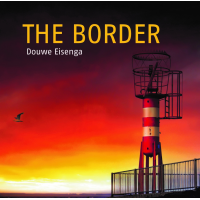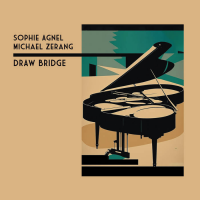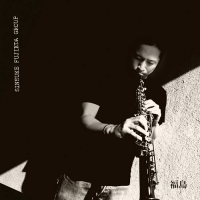Home » Jazz Articles » Album Review » Douwe Eisenga: The Border
Douwe Eisenga: The Border
Any music that makes such great use of riffs necessarily relies more on rhythm than music that places the emphasis on melody. The Border, however, though it also features riffs reminiscent of Eisenga's earlier albums, especially on "Encounter," "Perfect Picture," and "The Border," places its focus as much on the timbres of the instruments as on the music they play. The marimba-riff that opens the fifth track, "Here," is light and playful when contrasted with the harshness of the brass section that supports its riff; Eisenga's piano on the following piece, "Coming Back," seems all the icier for the softness of the saxophone that plays atop its simple motif.
To further explore what his ensemble is capable of, Eisenga makes greater use of dynamic changes than he has previously done. The intensity of the brass and percussion sections increases with their volume, their timbral qualities are heightened, and the brass stretches like a wall before the listener as the percussion drives the music harder. When the volume decreases again, the piano riffs seem all the more delicate, and their rhythms grow more infectious.
There has been a physical element running through Eisenga's music since at least For Mattia, and when the drums come in on "The Border," thumping hard on the first and third beats, it is almost impossible to not move to its rhythm. This physicality was subtler on the earlier records, but with Borders' increase in volume (and the addition of a percussion section, of course), Eisenga has tapped into his music's ability to set bodies moving, which was not fully explored on the likes of Open (Butler, 2021). It was something that has always been present in his piano playing, even in the funereal tones of For Mattia (TRTPK, 2019, but that Eisenga chose not to explore on either of those records, focussing then on how well he could vary the pieces' themes instead. The music on The Border, however, explores far more riffs and musical ideas per piece, as well as stretching the uses of the instruments' timbres to their limits. There is a maritime theme running throughout The Border. Though Eisenga is working here with a greater number of ideas and possibilities than on previous albums, The Border is never cluttered, and the space given to each idea allows them room to echo, creating a sense of vastness, openness, and power, like staring out at the ocean. The quality of each idea on this record—all the melodies, riffs, dynamic changes, and choices of instrument—is not judged by how well it stands up on its own, but by how well they contribute to the music's overall physical, sensory power; to that feeling of limitlessness and mystery that is at the heart of mankind's perception of the ocean.
Each of Eisenga's last three albums has had a common goal: to explore an emotional state by making use of all the musical possibilities offered by a limited set of options. For Mattia was centered on the suicide of a young woman; Open was born within the confines of the COVID-19 lockdowns; The Border seeks to convey the size, mystery, and power of the ocean. The former two could be thoroughly explored with only a piano. The latter, however, required a greater breadth and depth of musical opportunities, and from that range of options, Eisenga made a series of ingenious choices. Each of the ideas on his earlier solo piano pieces perfectly complimented each other, and every idea on each of The Border's ten tracks meshes together to create a whole far greater than the sum of its parts. The riffs here are often as short as they have ever been, but they come together like the drops in an ocean.
Track Listing
At The Coast; Encounter; Perfect Picture; The Voyage; Here; Coming Back; Drifted Ashore; The Border; Confrontation; Departure
Personnel
Douwe Eisenga
pianoErik-Jan de With
saxophoneAlbum information
Title: The Border | Year Released: 2023 | Record Label: V2 Music
Tags
PREVIOUS / NEXT
Support All About Jazz
 All About Jazz has been a pillar of jazz since 1995, championing it as an art form and, more importantly, supporting the musicians who make it. Our enduring commitment has made "AAJ" one of the most culturally important websites of its kind, read by hundreds of thousands of fans, musicians and industry figures every month.
All About Jazz has been a pillar of jazz since 1995, championing it as an art form and, more importantly, supporting the musicians who make it. Our enduring commitment has made "AAJ" one of the most culturally important websites of its kind, read by hundreds of thousands of fans, musicians and industry figures every month.





















